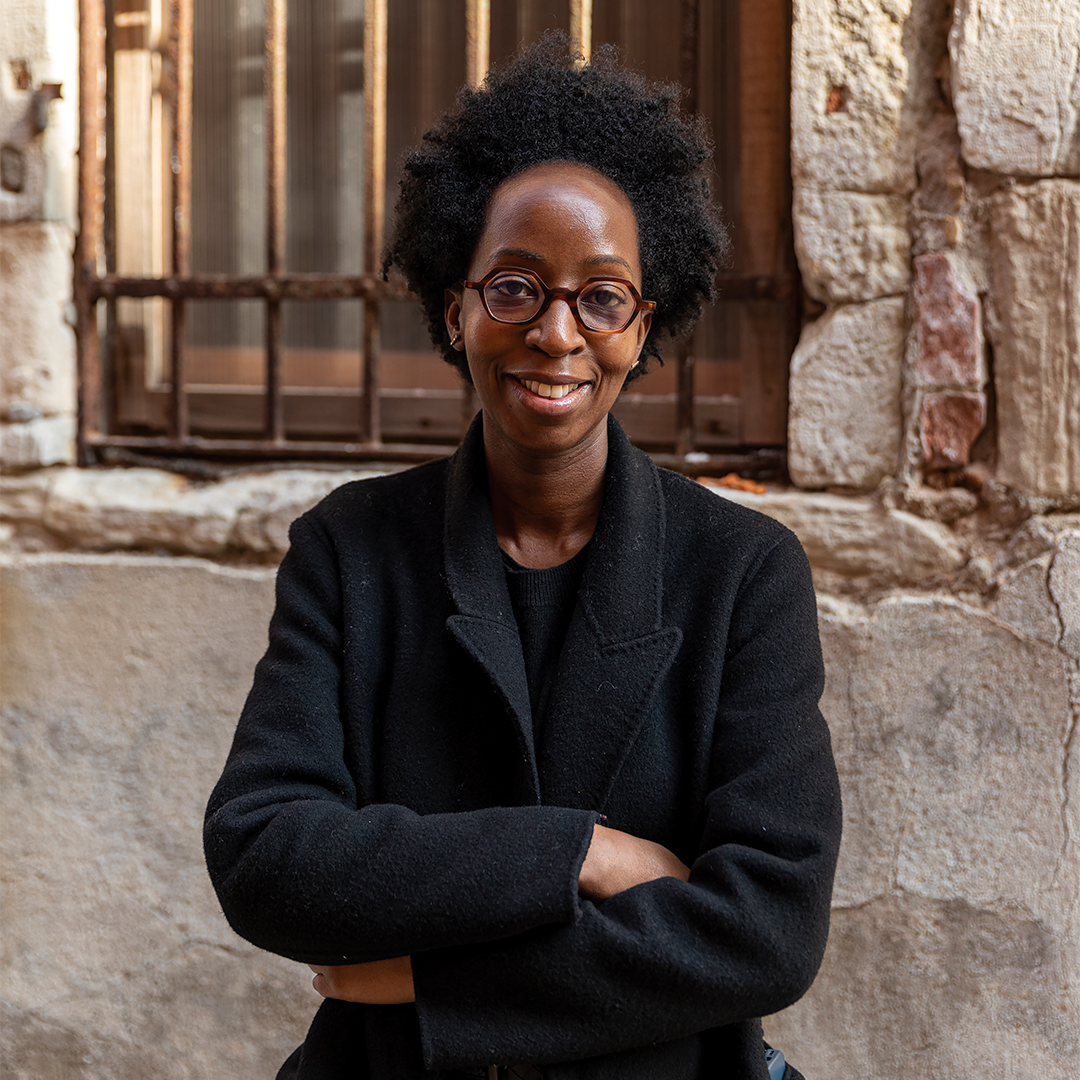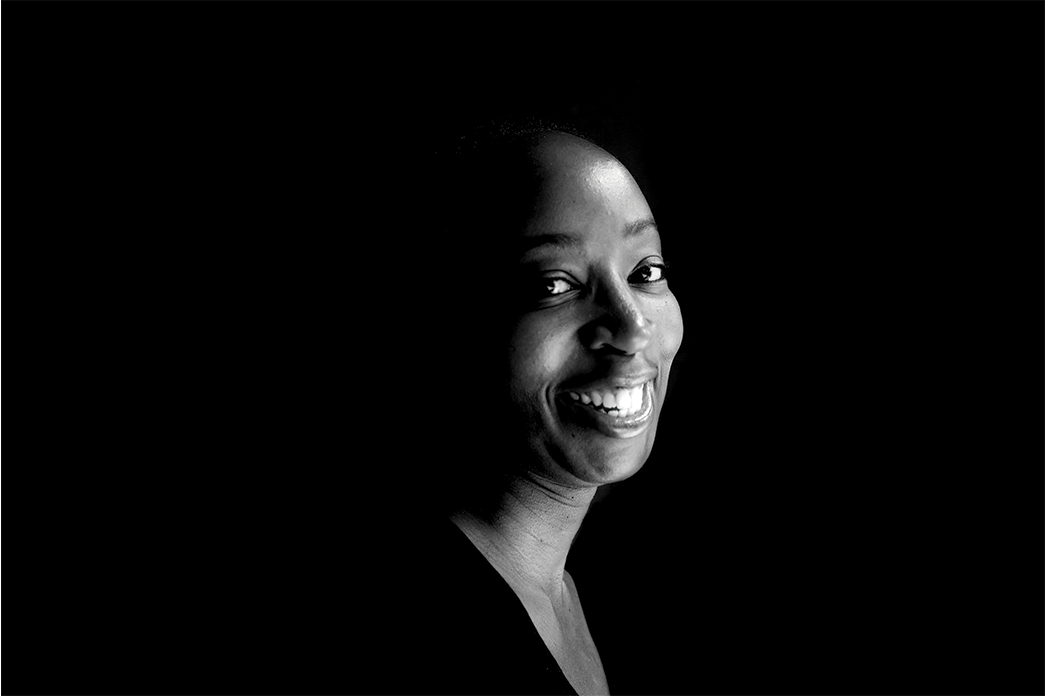
The youngest of four siblings,
Paula Nascimento comes from a family that fought for the country’s independence.
At 41, she has already lived in Luanda, Lisbon and London, before eventually
returning definitively to her homeland in 2010. Determination is part of her
genes, and the curator’s extensive CV is proof of this. She studied at the UK’s
oldest school for architecture and later worked at Siza Vieira’s studio and
other studios in London. Hand in hand with contemporary art, Paula continues to
chart her path with many projects underway and many more in sight, to be
discovered in the next few lines.
Tell us about your origins.
I was born in Luanda in 1981, into a family engaged in the processes of the struggle for independence, as on my mother’s side as my father’s. I am the youngest of four siblings, I lived and grew up in Luanda until I was 11 years old, when I went to Lisbon to study. After secondary school, I moved to London, where I entered higher education, before returning for good to Luanda in 2010.
You have made an international reputation for yourself when it comes to architecture and curating. When did you realise that you wanted to work in these fields?
I have always liked the arts and drawing; I wanted to study architecture since I was a child. And, in a way, all my education was directed towards that field. Curating came about much later, almost accidentally, as an expansion of my work in the field of architecture.
Did your parents have any influence in your choice of vocation?
My parents always gave me and my siblings the freedom to choose what we wanted to do. Therefore, they always supported my decision to study architecture, as well as the subsequent choices.
You have an extensive CV. You went to London South Bank University...
Yes, I studied there, but before that I was at the Architectural Association School of Architecture (AA), where I did a foundation course and my honours degree. The AA is the UK’s oldest independent school of architecture and, at the time I was there, it was a very experimental school, with a very strong artistic and international perspective. There, I had the opportunity to interact with students from different locations and study with different tutors and under a flexible system where the student was pretty much in charge of their own path. I studied architecture within the framework of photography, film, writing and so it was an experience that played an important role in my education and the way I developed my career. Many of my employees, colleagues and professional partners are from this period. Then I spent a year at Siza Vieira’s studio, working on the Cidade Velha renovation project, in Cape Verde, and worked in other practices in London, before returning to Luanda.
«I was born (…) into a family engaged in the processes of the struggle for independence»
Your artistic vein covers the pan-African cultural uprising. Can you tell us a bit about that?
I work with contemporary art made in Africa and in the diaspora, and much more besides. Naturally there is still a lot to be done in this context, especially in Angola and other Portuguese-speaking countries, but I practice in a wide context with various curators and artists.
In the last 15 to 20 years, there has been greater attention placed on contemporary production on the continent, much due to the work of curators, artists and events such as the Feira 1:54 fair, among other, both on the continent (such as biennials and art fairs) and internationally. Even so, for a long time, when talking about African art, the discourse was immediately relegated to the classic arts (masks and statues), almost as if there was no other type of production; and, recently, there is interest and demand for modern and contemporary arts, which are also beginning to be better understood.
So, and in several cases, for many curators working in the field of contemporary art, there is a double function of making these other, more marginalised «art stories» visible, through research, publications and exhibitions; and also of trying to find other paradigms and terminologies that reflect the complexity of the artistic production on the continent, as well as its relationship with other spaces; and, mainly, that you don’t end up homogenising the production of such a diverse continent.
What projects are you developing at the moment?
At the moment I have several projects underway. I am preparing two exhibitions of a more experimental and multidisciplinary nature: one for a European art gallery and another for a space-project in New York, with young artists and within some of the subjects I have been working on. Both for the beginning of next year. In addition to these, I have developed a long relationship with the Lubumbashi Biennale (I am an associate curator of the 7th Biennale, which took place this year) and I am the artistic director of the Nesr Art Foundation, a new project of art residencies for emerging artists in Luanda. In addition, I have some research and editorial projects, which I am developing in parallel with other activities.
Tell us about your origins.
I was born in Luanda in 1981, into a family engaged in the processes of the struggle for independence, as on my mother’s side as my father’s. I am the youngest of four siblings, I lived and grew up in Luanda until I was 11 years old, when I went to Lisbon to study. After secondary school, I moved to London, where I entered higher education, before returning for good to Luanda in 2010.
You have made an international reputation for yourself when it comes to architecture and curating. When did you realise that you wanted to work in these fields?
I have always liked the arts and drawing; I wanted to study architecture since I was a child. And, in a way, all my education was directed towards that field. Curating came about much later, almost accidentally, as an expansion of my work in the field of architecture.
Did your parents have any influence in your choice of vocation?
My parents always gave me and my siblings the freedom to choose what we wanted to do. Therefore, they always supported my decision to study architecture, as well as the subsequent choices.
You have an extensive CV. You went to London South Bank University...
Yes, I studied there, but before that I was at the Architectural Association School of Architecture (AA), where I did a foundation course and my honours degree. The AA is the UK’s oldest independent school of architecture and, at the time I was there, it was a very experimental school, with a very strong artistic and international perspective. There, I had the opportunity to interact with students from different locations and study with different tutors and under a flexible system where the student was pretty much in charge of their own path. I studied architecture within the framework of photography, film, writing and so it was an experience that played an important role in my education and the way I developed my career. Many of my employees, colleagues and professional partners are from this period. Then I spent a year at Siza Vieira’s studio, working on the Cidade Velha renovation project, in Cape Verde, and worked in other practices in London, before returning to Luanda.
«I was born (…) into a family engaged in the processes of the struggle for independence»
Your artistic vein covers the pan-African cultural uprising. Can you tell us a bit about that?
I work with contemporary art made in Africa and in the diaspora, and much more besides. Naturally there is still a lot to be done in this context, especially in Angola and other Portuguese-speaking countries, but I practice in a wide context with various curators and artists.
In the last 15 to 20 years, there has been greater attention placed on contemporary production on the continent, much due to the work of curators, artists and events such as the Feira 1:54 fair, among other, both on the continent (such as biennials and art fairs) and internationally. Even so, for a long time, when talking about African art, the discourse was immediately relegated to the classic arts (masks and statues), almost as if there was no other type of production; and, recently, there is interest and demand for modern and contemporary arts, which are also beginning to be better understood.
So, and in several cases, for many curators working in the field of contemporary art, there is a double function of making these other, more marginalised «art stories» visible, through research, publications and exhibitions; and also of trying to find other paradigms and terminologies that reflect the complexity of the artistic production on the continent, as well as its relationship with other spaces; and, mainly, that you don’t end up homogenising the production of such a diverse continent.
What projects are you developing at the moment?
At the moment I have several projects underway. I am preparing two exhibitions of a more experimental and multidisciplinary nature: one for a European art gallery and another for a space-project in New York, with young artists and within some of the subjects I have been working on. Both for the beginning of next year. In addition to these, I have developed a long relationship with the Lubumbashi Biennale (I am an associate curator of the 7th Biennale, which took place this year) and I am the artistic director of the Nesr Art Foundation, a new project of art residencies for emerging artists in Luanda. In addition, I have some research and editorial projects, which I am developing in parallel with other activities.





